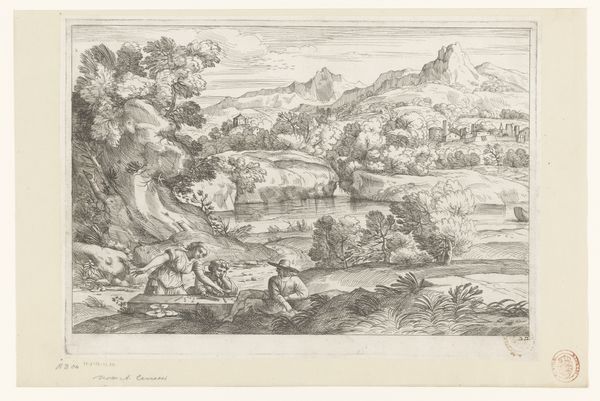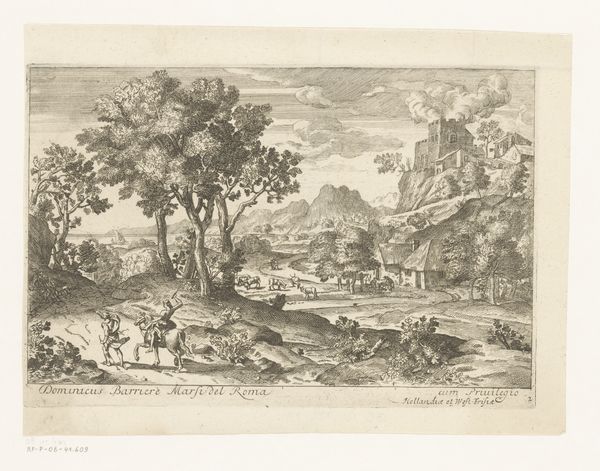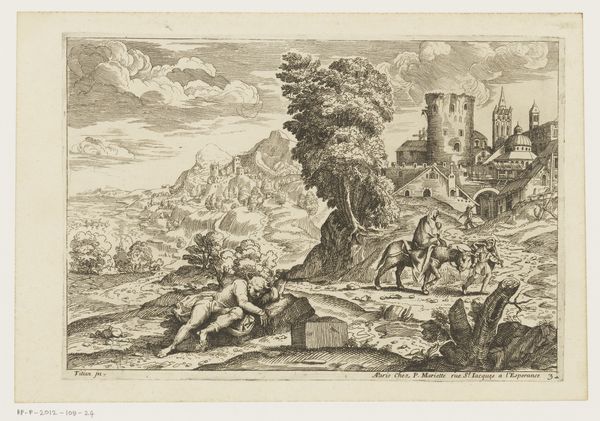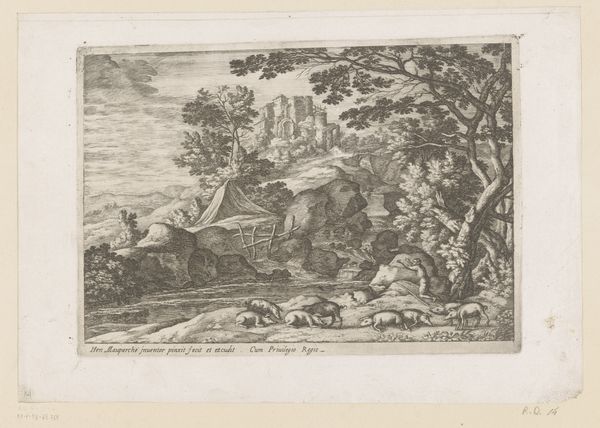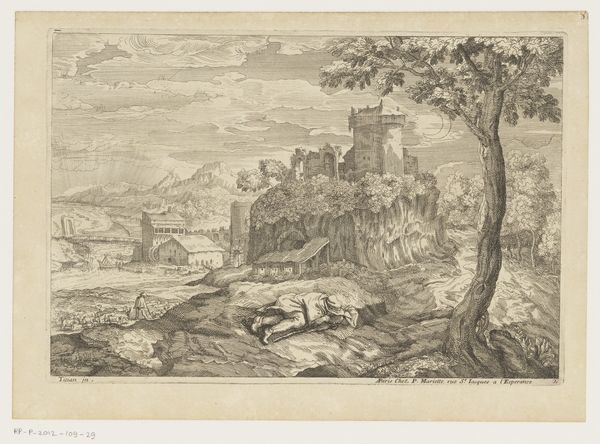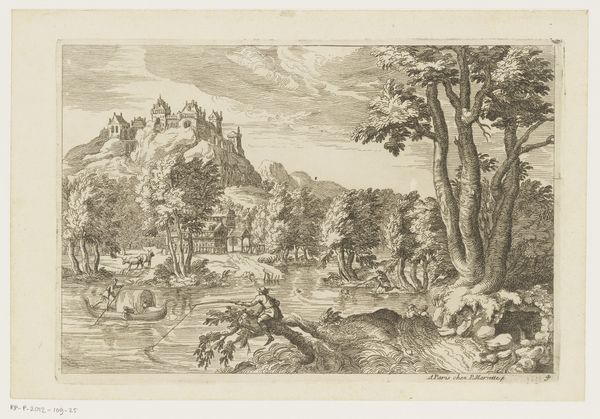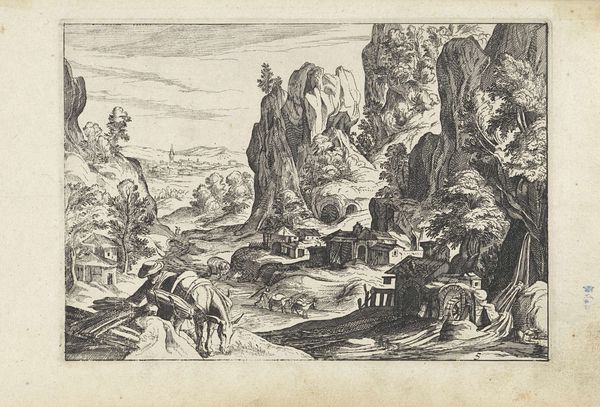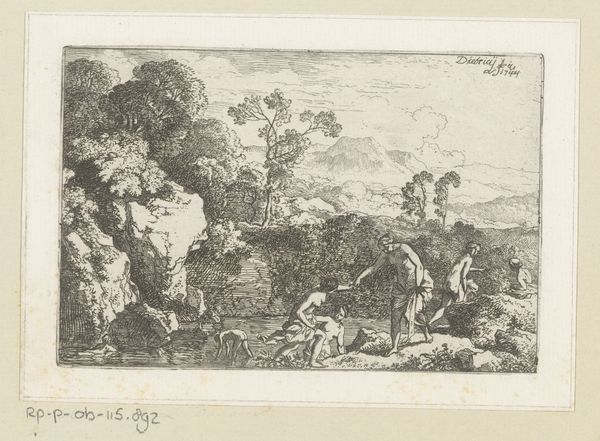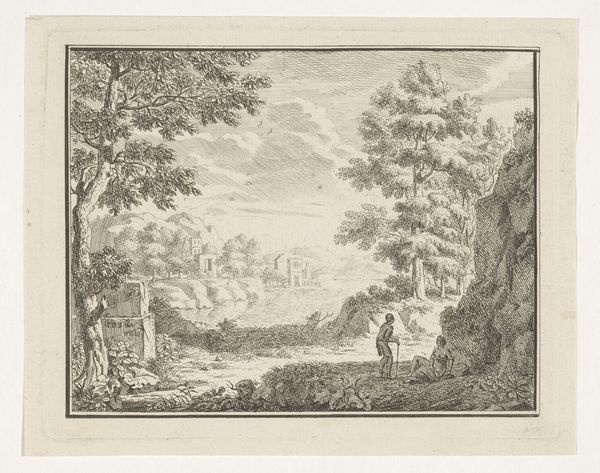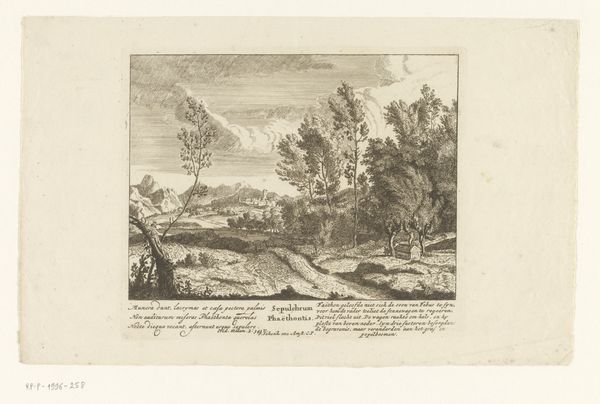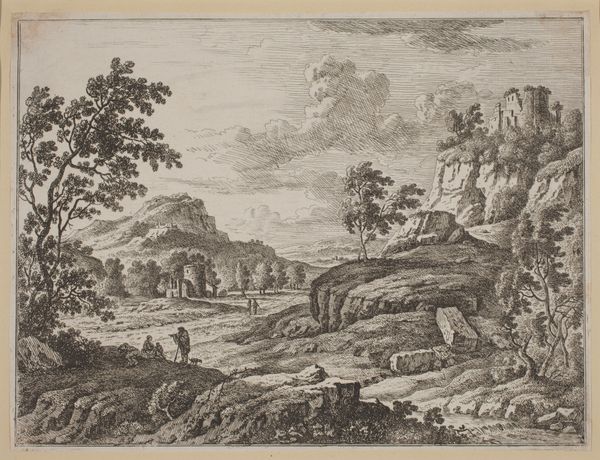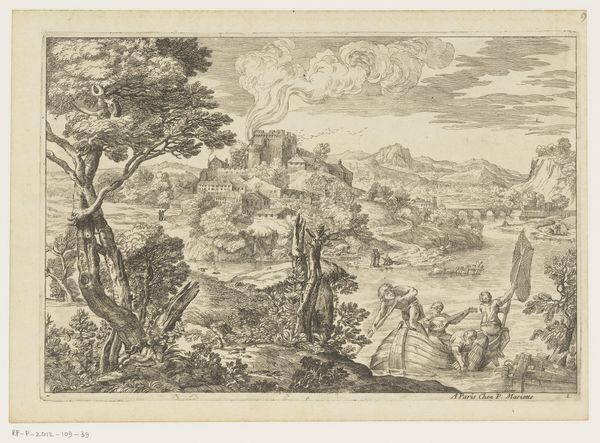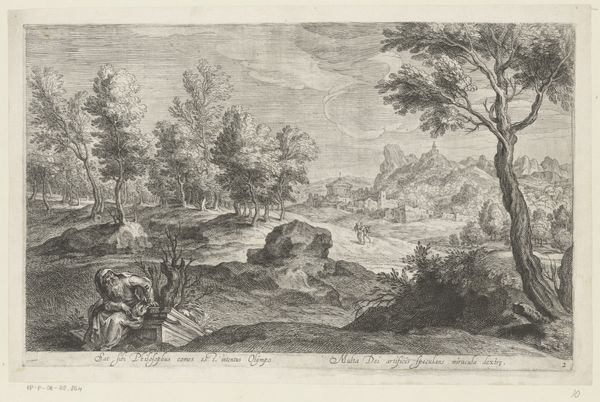
print, engraving
#
aged paper
#
baroque
#
parchment
# print
#
old engraving style
#
landscape
#
figuration
#
engraving
Dimensions: height 110 mm, width 157 mm
Copyright: Rijks Museum: Open Domain
Curator: Editor: We’re looking at Henri Mauperché’s "Landschap met gebouwen op een heuvel," dating roughly between 1612 and 1686. It’s an engraving, which gives it this beautifully intricate, almost ethereal quality. I am fascinated by the contrasts of darkness and light! How do you read this print? Curator: As a materialist, I immediately think about the physical act of creating this image. The labor involved in engraving, the artist's mastery over the metal plate, and the pressures applied to create multiples of an image. Consider also that engravings at this time were a significant mode for circulating images and information across distances. It raises questions about access, knowledge, and the distribution of cultural capital. What kind of paper or parchment was being employed at this time? Where would the artist have acquired this material, and how might it shape or inform this artist’s style? Editor: That’s a perspective I hadn't considered. I was focusing on the figures and ruined buildings and not necessarily the "how". So the kind of paper would indicate…? Curator: Its production reveals social context. Cheaper papers suggest wider distribution and consumption of imagery. High-quality parchment connects with artisanal craftsmanship and restricted circulation of elite art. Understanding these things changes our experience with what we're looking at; do we appreciate the final product on its own, or dive deeper into the material aspects of labor to generate it? How does materiality shift our perspective on Mauperche and Baroque artistic conventions more generally? Editor: Wow, I'm starting to look at it completely differently. It is as though each impression from the engraved plate represents individual labor, repeated effort, yet also a moment of democratizing this kind of artwork. The materiality also indicates a wider consumption and reach that painting simply could not match at that time! I love the possibilities this unlocks. Curator: Exactly. By focusing on the materials, processes, and the social contexts of its creation, we move beyond aesthetic appreciation. Now we can comprehend how this humble engraving acted as an active agent in the art world, carrying artistic ideas to other viewers beyond the social elites who were mostly familiar with one-of-a-kind paintings.
Comments
No comments
Be the first to comment and join the conversation on the ultimate creative platform.
